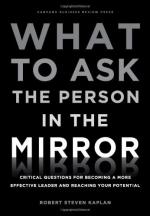|
This section contains 625 words (approx. 3 pages at 300 words per page) |

|
Perhaps the most common optical instrument in the world, mirrors have been used for millennia; artifacts made of polished obsidian dating back 7,500 years have been found in Turkey. The earliest man-made mirrors, which were constructed of highly buffed copper, brass, and bronze, were manufactured in the first century A.D. Not until the thirteenth century did the Venetians develop a method for silvering glass to make it more reflective. The modern silvering process was invented in 1835 by the German chemist Justus von Liebig, and, with a few improvements, it is his process that we presently use to manufacture mirrors today. Technically, a mirror is any smooth surface that reflects more light than it absorbs. The mirrors with which we are familiar are actually panes of glass that have one side coated with a very thin layer of metal, which may subsequently be coated with another layer of dielectric...
|
This section contains 625 words (approx. 3 pages at 300 words per page) |

|


